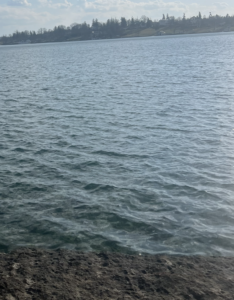Nikolete Michalkow, Alice West, Allie Driesen, Cooper Fensterstock, Maddie Tavernier
When beginning the project, our group did not have trouble choosing a passage. After looking at multiple passages for a moment, our group landed on Where I Lived and What I Lived For.
Upon viewing the multiple drafts, our group found it intriguing to see the changes Thoreau made to the first paragraph. In versions D, E, F, G, and the Princeton final edition, the beginning paragraphs begin with “At a certain season of our lives, we are accustomed to considering every spot as the possible site of a house.” While this may not initially strike one as a fascinating paragraph, upon looking at the first versions, A, B, and C, it is interesting to see the stark changes Thoreau made throughout his editing process. Additionally, it perfectly sets up the rest of the writing throughout the piece.
While analyzing further, our group found that the first version, version A is strikingly different and about something else than the other versions. For instance, version A begins with, “When I first went to the pond to live, my house was unfinished, not being finished for winter and but merely a defense against the rain, without plastering or chimney…” Then, versions B and C are introduced with, “When I first took up my abode in the woods, my house was not finished for the winter, but was merely a defense against the rain, without plastering or chimney…” While the minor change is switching from him talking about a house on a pond to a house in the woods, it changes the entire perspective. Our group was uncertain of why he changed it; however, we do believe that it makes more sense for the readers to picture a house in the woods rather than on a pond due to the further details he goes into later in the piece.
His initial first paragraph in the first three versions turned into the eighth paragraph in the final versions. He made various alterations to the three versions before deciding to add several paragraphs before this paragraph began. The version before he changed everything, version C, introduces with, “When I first took up my abode in the woods, my house was not finished for the winter, but was merely a defense against the rain, without plastering or chimney, or much furniture, with walls of rough weather-stained boards and wide chinks, which made it cool at night, was itself an inspiring object, and reacted on me the builder.” Our group analyzed this quote and believed that, due to Thoreau not being protected from the natural aspects of nature, he formed an increasing connection to it. Throughout his writings about nature, it is crucial to note that he never complains about it but only reflects upon it. The nature around him, even the cold rain, makes him feel interconnected with nature.
Furthermore, our group felt that this passage as a beginning paragraph would be nearly too much for the reader to digest without knowing the context. Thus, Thoreau recognized this and provided the readers with much more context and information in the introduction paragraph so that, when reaching the section in paragraph eight, it would be much easier to understand and grasp.
A large portion of the piece is based on Thoreau imagining everywhere he could live, yet the thought of it is much more satisfying than an actual house or material goods. He talks about the plans and houses he could build; however, he decides against them because he believes the more fulfilling part is leaving things alone.
When reviewing and analyzing a text, our group paid close attention to detail. For instance, while studying versions D and E, Thoreau alters a little detail in the first few words of the starting sentence, creating a difference. In version D, the sentence starts with, “At some seasons of our lives.” Yet, in version E and the further versions after that, it begins with, “At a certain season of our lives.” While this is a minor difference, our group found that it changed the piece’s perspective by simply adjusting one word. To our group, Thoreau finally saw the direction in which this piece was going and decided to enunciate that decision. Changing the wording from some to certain alters an infirmity of the season that Thoreau then goes into explaining throughout the text.
This revision also follows the drastic change of taking the original first paragraph and making it the eighth one, emphasizing the direction Thoreau goes.
Following our group viewing the minor changes Thoreau made, we felt that the prominent alteration in the introduction paragraph was crucial to look at. Versions A, B, and C are repositioned in the eighth paragraph of the final version. In his first version, version A, he described many details that, without an introduction paragraph, feel intense for the reader. In the final version, Thoreau takes his time explaining the houses he imagined living in, yet is broad with his information and then presents more heavy details later. We agreed with Thoreau’s decision because the final version feels much more complete with information and follows the story of his imagination and the production of this piece.
Thoreau’s ability to create a story, combined with the detail of nature, was very fascinating to our group. After seeing how many drafts there were, it was surprising to see how many times it takes for a writer to feel final in their decisions and publish a piece. It was easy for our group to see the difficulties, complications, and evolutions Thoreau went through during this process of the piece. We feel that Thoreau’s vulnerability in showing his drafts and mistakes is admirable. Since most of our group is English or education majors, it made us feel seen. While writing, sometimes it can make writers feel discouraged because of the many drafts and alterations they have to go through. Yet, the visualization of Thoreau’s drafts made everyone feel more at ease, learning that everyone goes through drafts and mistakes, even Thoreau.

